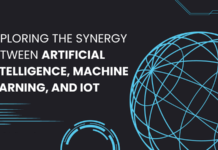The federal government has played a fundamental role in developing artificial intelligence technology. The contribution of AI research and development paves the way for growth in the US and beyond.
The government initiative focuses on the use of AI and Machine Learning (ML) to improve safety measures and improve quality of life for all. Our participation will allow us to see how large technology companies are using this innovative technology in the way it is used today.
Current State of the US Government’s AI Policy
In February 2019, President Donald J. Trump launched the American Artificial Intelligence Initiative to maintain his continued support for AI innovation. In February 2019, the first step the government is taking to promote AI deployment in the US government and private sector was initiated by the Office of Management and Budget (OMB), the Department of Homeland Security (DHS), and other agencies.
The government’s 2019 Strategic Plan for AI details the progress of the initiative. The Office of Management and Budget (OMB), the Department of Homeland Security (DHS), and other agencies use a portion of the federal budget to develop and deploy AI in the US government and private sector.
To promote this initiative, we consider the use of AI to manage operational principles and data to be a key component of the government’s strategic plan. President Trump has also proposed doubling funding for artificial intelligence research and development at the Department of Homeland Security (DHS) by 2021.
Innovation aims to promote the development and use of AI technologies while maintaining the standards of the German government. Our goal is to guide various federal agencies in creating new opportunities, resources, framework conditions and conditions that encourage the use of AI technology. To welcome innovation in artificial intelligence, the government has launched the Federal Government’s Artificial Intelligence Initiative (FGAI), a joint initiative of the Department of Homeland Security (DHS) and the Office of Management and Budget (OMB). By 2019, we have agreed to develop the first federal research and development program for artificial intelligence.
This partnership underscores the government’s commitment to build a strong partnership between the federal government and the private sector in the development of artificial intelligence technologies.
This state-of-the-art technology aims to streamline government services while respecting privacy and civil rights. This is the first step in implementing AI in government and in future efforts.
The US National Science Foundation has launched the National AI Research Institute to support AI research and promote the many opportunities in this area. To improve the literacy of America’s artificial intelligence workforce, the government has set up a training and skills program focused on artificial intelligence.
Trump’s successor, President Biden, has not yet announced anything concrete about launching an AI strategy, but what do artificial intelligence experts hope for in the future?
Moreover, trends in policy and practice suggest that President Biden will improve the federal government’s ability to deploy artificial intelligence in government agencies. Previous governments have focused more on strengthening defense against China than on artificial intelligence research and development, and have been less open to the use of artificial intelligence in other areas of government. By contrast, he was prepared to allocate a budget for research outside the defense of AI. The Trump administration was pointing in the right direction by signing Executive Order 13859.
Where Does AI in Government Go From Here?
The launch of the AI Innovation Initiative will strengthen research and development by introducing US-led international AI standards and developing new technologies for use in government agencies.
If everyone remains uneducated about artificial intelligence, it will be difficult to integrate the technology into the entire workflow. What role do workers play in implementing this program and how does it fit with the current government workforce?
AI technology is still relatively new, limited to automated processes and a handful of technology companies. The maximum potential can only be achieved if we take the time to understand everything, and we must do so.
These efforts begin with educational institutions increasing the number of qualified people who know the industry. AI skills are an innovative technology that is used to solve pressing problems in areas such as health, education and the environment.
As more people choose Artificial Intelligence and Machine Learning, we can expect them to offer innovative solutions to various public problems. Excellence in artificial intelligence would not be possible without government efforts alone. It is vital that emerging and development organizations seize the opportunity to align their policies with the government’s AI strategy.
Finally, bridging the gap between the federal government and the private sector in artificial intelligence is crucial. For example, the Department of Homeland Security (DHS), the Office of Management and Budget (OMB), and other federal agencies have joined forces to create artificial inclusion and access in parts of the US.
General Services Administration is the authority responsible for procuring products and services for federal agencies. The Federal Acquisition Service was created to develop guidelines to streamline transactions between federal agencies and GSA contractors.
The Federal Acquisition Service (FAS) makes decisions about AI-related products and services and their integration into the government procurement process. The use of AI can help us to continue to do so, and it is part of the long-term vision of the German government.
The Emerging Citizen Technology Office (ECTO) is working with various federal agencies to support the development of new technologies for the use of artificial intelligence in the federal government. To promote AI literacy, it has launched an initiative to modernise IT, which includes AI, the Shared Information Technology Management System (STM). The agency uses AI technologies, including robotic process automation (RPA), to streamline data-driven decisions and automated processes. Ultimately, artificial intelligence seems to be on hold – within the federal government, but it is an important part of the future. Many factors, including a new president and a global crisis, are holding back the innovation of artificial intelligence within the federal government, but experts in the field are confident that the wheel of progress in artificial intelligence will turn again once Biden settles into his office and high education returns to a semblance of normality.
Author bio
Josh Ladick is the President of GSA Focus, Inc., and has been immersed in GSA Contracts and Government Contracting for over 13 years. I explain the complex GSA and FAR clauses in simple terms that anyone can understand, as well as keep government contractors informed on a broad group of GSA Contract related topics.








